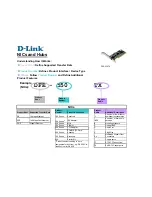
34. Dynamic Routing
ROX™ v2.2 User Guide
399
RuggedBackbone™ RX1500
34.1.4.3. Hello Interval and Dead Interval
The hello interval is the time between transmission of OSPF Hello packets. The dead interval is the time
to wait without seeing an OSPF Hello packet before declaring a neighboring router dead and discarding
its routes. It is recommended that the dead interval be at least four times the hello interval for reliable
operation.
Lower values of these settings will help to speed up the change in network routes when the topology
of the network changes. It will also increase the load on the router and the links, due to higher traffic
caused by the increase in messages. Lower values will also put limits on the number of routes that can
be distributed within an area, as will running over slower links.
OSPF will not work properly if the Hello Interval and Dead Interval are not identical on
every router in an area.
34.1.4.4. Active/Passive Interface Default
OSPF regards router interfaces as either passive or active, sending OSPF messages on active
interfaces and ignoring passive interfaces. By default, newly created interfaces are viewed as passive
from OSPF until they are configured active. This is more efficient and secure for the router. The
default type for new interfaces is controlled by the passive interface default option in the OSPF Global
Parameters.
The default setting of Passive Interface Default means that you must explicitly configure
interfaces active before OSPF will attempt to use them.
34.1.4.5. Redistributing Routes
Routes for subnets which are directly connected to the router but are not part of the OSPF area or
RIP or BGP networks can be advertised if "redistribute connected" is enabled in the OSPF, RIP, or
BGP Global Parameters. Static routes and routes handled by the kernel can also be redistributed if
"redistribute static" and "redistribute kernel" are enabled, respectively.
34.1.4.6. Link Detect
Link detection is enabled for active network interfaces. Link detection ensures that the appropriate
routing daemon is notified when an interface goes down and stops advertising subnets associated with
that interface. The routing daemon resumes advertising the subnet when the link is restored. This allows
routing daemons to detect link failures more rapidly, as the router does not have to wait for a “dead
interval” to time out). Link detection also causes ”redistributed“ routes to start and stop being advertised
based on the status of their interface links.
34.1.4.7. Configuring OSPF Link Costs
Link cost determines which route to use when multiple links can reach a given destination. By default,
OSPF assigns the same cost to all links unless it is provided with extra information about the links.
Each interface is assumed to be 10Mbit unless specified otherwise in the auto-cost bandwidth setting
found under the ip menu.
The default OSPF reference bandwidth for link cost calculations is 100Mbit. The reference bandwidth
divided by the link bandwidth gives the default cost for a link,which by default is 10. If a specific bandwidth
is assigned to each link, the costs take this into account.
You can manually assign a link cost in the OSPF Interface Configuration for each interface. Do this for
cases where the speed of the link should not be used as the method for choosing the best link.
















































